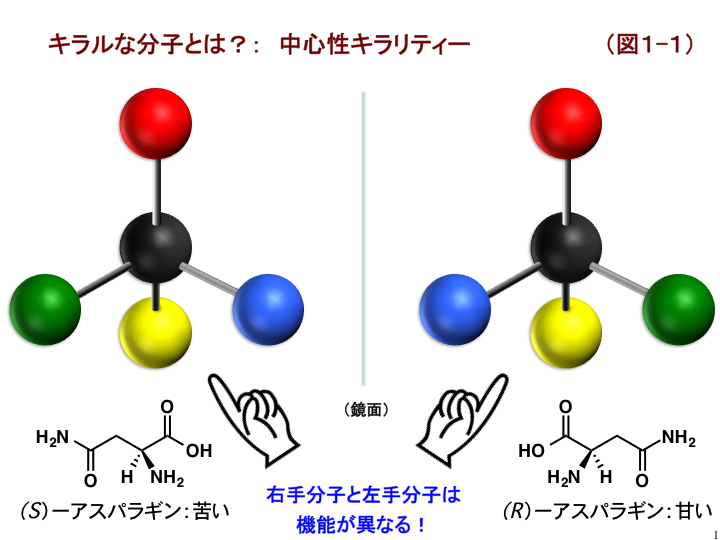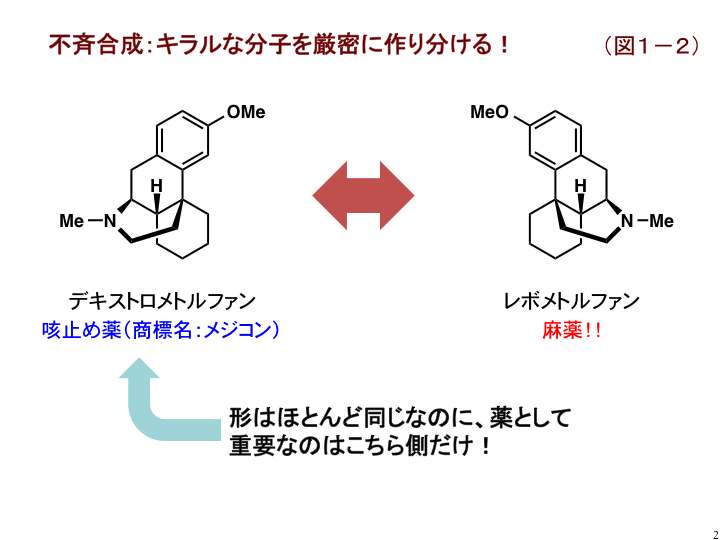“Synthetic Organic Chemistry” is the research field for developing the reaction that can synthesize wide varieties of organic compounds whichever we want. Especially, our target molecules are “medicinal compounds” and “organic functional materials”, which will make our life more wonderful! In our group, we try hard to establish a new methodology for synthesize those compounds effectively, cost efficiently and environmental friendly.
The key words of our research are, “asymmetric synthesis” “molecular catalyst” “catalytic activity” and “stereoselectivity”.
What is the Enantioselective Synthesis?
“Enantioselective synthesis” is the synthetic method to generate chiral organic compounds from achiral or racemic substrate, selectively. It is well known that several organic molecules have their “mirror image partners”, and those relationships are called as “enantiomer”. For example, when an organic compound has a carbon atom (black ball) which is connected to four different substituents (red, blue, yellow and green ball), the compound has its mirror image isomer (Figure 1). These compounds are so called “chiral”, and have optical activities. Especially in the medicinal chemistry, it is important to synthesize one enantiomer selectively, since each enantiomer has different bioactivity in many cases, such as dextromethorphan and levomethorphan; dextromethorphan is known as one of the drugs of the morphinan class, which has sedative, dissociative and stimulant properties. On the other hands, levomethorphan is regarded as a narcotic.


Asymmetric Hydrogenation of KetonesAsymmetric Hydrogenation of IminesAsymmetric IsomerizationAsymmetric CyanationAsymmetric CarbamoylationPd-nanoparticle CatalystPhotocyclizationReferences
